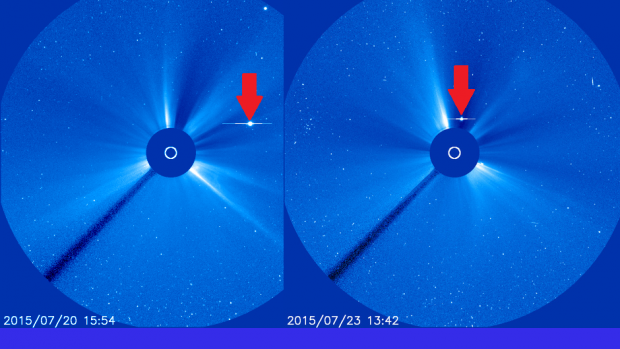
What are those bright spots that appear in the CME Image, people often ask. Notice in the example above, the spot indicated by the red arrows appears to move from right to left over the course of three days. The Sungrazer Project page hosted by the Naval Research Lab can answer that question. For our example, the Sungrazer page shows that the bright spot is Mercury, and will be visible from July 17-July 30.
These CME Images are provided by the SOHO/LASCO coronagraph instrument. Sometimes there are gaps in the imagery when the SOHO spacecraft is not being tracked by the Deep Space Network (DSN). Tracking time available on the DSN must be shared among several spacecraft, so SOHO is not tracked continuously. To see when SOHO data will be available, you can visit this page. To see what the DSN is currently tracking,you can visit the DSN Now page.